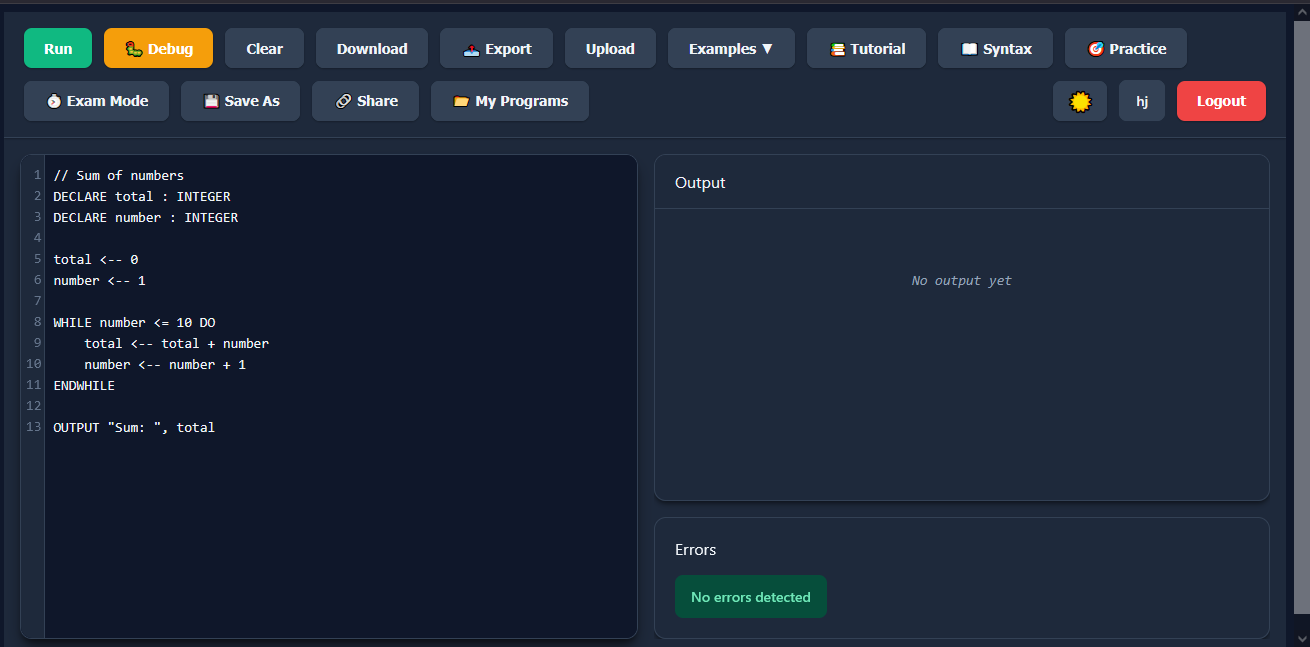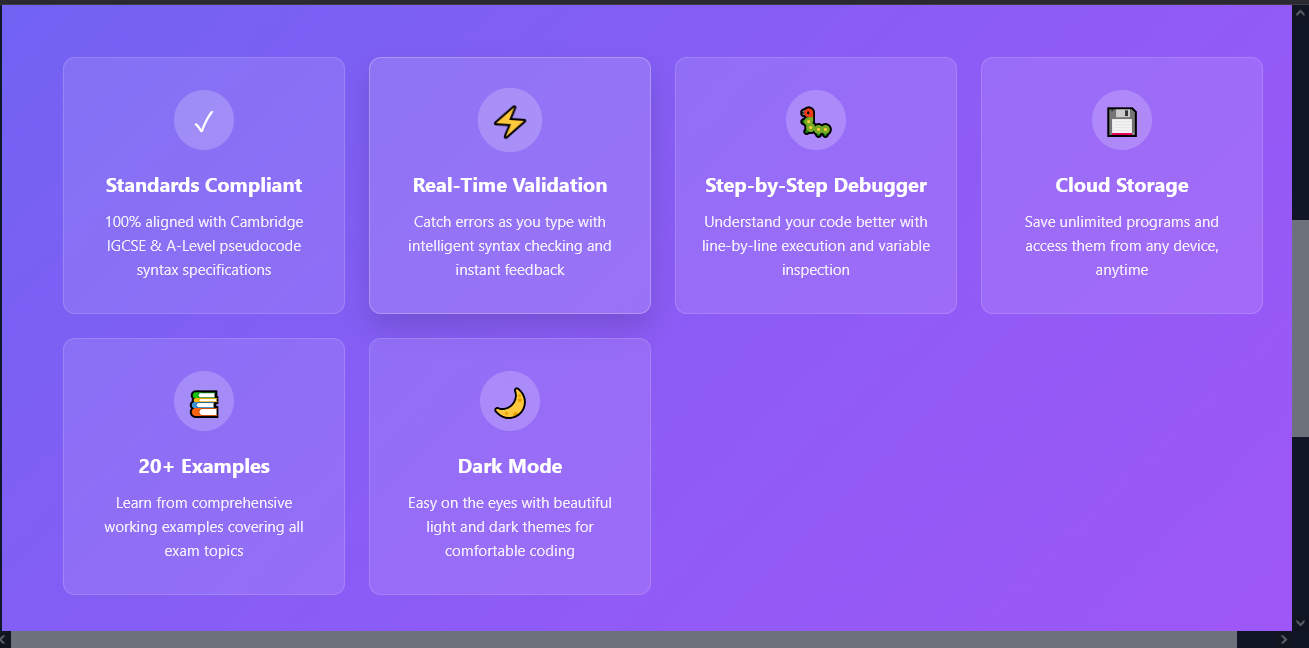

PseudoRun
Run pseudocode like real code
PseudoRun is a smart, browser-based pseudocode interpreter designed for IGCSE and A-Level Computer Science students. It lets students write, run, and debug pseudocode instantly — without downloading anything. The goal is simple: make learning algorithms less intimidating and way more interactive. It’s built to simulate how actual programming feels, helping students transition smoothly from pseudocode to real languages.




Features
- Live pseudocode execution and instant output
- Syntax highlighting and error detection for IGCSE-style pseudocode
- Built-in examples and templates for quick learning
- Works directly in the browser — no setup or installation
- Clean, beginner-friendly UI made for students
Use Cases
- Practicing IGCSE/A-Level pseudocode questions
- Teachers running live pseudocode demos in class
- Students testing and debugging pseudocode assignments
- Quick algorithm prototyping before coding in Python or Java
- Self-learners exploring logic and problem-solving basics
Comments


Hey everyone! I’m an IGCSE student who got tired of writing pseudocode that never runs. We spend hours debugging logic on paper, so I built Pseudocode Runner — an online editor that actually executes Cambridge IGCSE & A-Level pseudocode. Here’s what it does: ⚡ Real-time syntax validation — catches errors instantly ▶️ Live execution — see output and interact with your program 📚 20+ ready-made examples to learn from ☁️ Cloud save + Google login — no setup or installs 🎓 100% free to start I built this to make learning algorithms less painful and more interactive. You can finally test your pseudocode instead of just imagining how it runs. Special thanks to Compyle for helping bring this project to life — from code generation to polishing the final version. It made building a full web app possible without losing weeks in setup and debugging. If you’re a student, teacher, or developer who’s ever had to manually trace loops on paper, give it a try. Feedback’s welcome — especially from people in the Cambridge CS world. Thanks for checking it out 💜

I really like the concept of running pseudocode as if it's real code. This feels super helpful for early prototyping and explaining logic to non-developers or junior devs before going full implementation. Quick question: how strict is the syntax? Do you support more “human” phrasing (like natural-language steps), or does it need to follow a defined grammar?







Jogos de Hoje is a live football score platform offering real-time match results, updated league tables, and statistics. Follow Brazilian and international games effortlessly at https://jogosdehoje.eu.com/.

Premium Products
Sponsors
BuyMakers

Makers

Comments


Hey everyone! I’m an IGCSE student who got tired of writing pseudocode that never runs. We spend hours debugging logic on paper, so I built Pseudocode Runner — an online editor that actually executes Cambridge IGCSE & A-Level pseudocode. Here’s what it does: ⚡ Real-time syntax validation — catches errors instantly ▶️ Live execution — see output and interact with your program 📚 20+ ready-made examples to learn from ☁️ Cloud save + Google login — no setup or installs 🎓 100% free to start I built this to make learning algorithms less painful and more interactive. You can finally test your pseudocode instead of just imagining how it runs. Special thanks to Compyle for helping bring this project to life — from code generation to polishing the final version. It made building a full web app possible without losing weeks in setup and debugging. If you’re a student, teacher, or developer who’s ever had to manually trace loops on paper, give it a try. Feedback’s welcome — especially from people in the Cambridge CS world. Thanks for checking it out 💜

I really like the concept of running pseudocode as if it's real code. This feels super helpful for early prototyping and explaining logic to non-developers or junior devs before going full implementation. Quick question: how strict is the syntax? Do you support more “human” phrasing (like natural-language steps), or does it need to follow a defined grammar?







Jogos de Hoje is a live football score platform offering real-time match results, updated league tables, and statistics. Follow Brazilian and international games effortlessly at https://jogosdehoje.eu.com/.

Premium Products
New to Fazier?
Find your next favorite product or submit your own. Made by @FalakDigital.
Copyright ©2025. All Rights Reserved


















